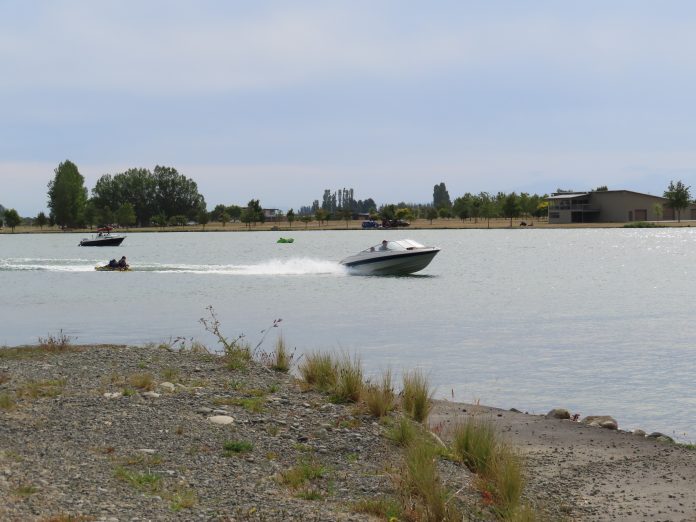About 180 Lake Hood residents gathered on Monday night to hear the latest on resolving a potentially toxic algal bloom.
The lake remains closed to water users after a health warning was issued last month by Te Whatu Ora. It is the second such algal bloom at the lake in nine months.
The back-to-back blooms are concerning residents, who have complained the lake smells like ‘‘a dirty fish tank’’, and call into question the long-term health of the premier watersport venue.
A taskforce was formed by locals and the district council after the last algal bloom in March last year. A warning placed on the lake at that time was the first in the lake’s 22-year history.
Members of the Lake Hood Water Quality Taskforce are Ashburton Aquatic Park Charitable Trust, Huntingdon Park Property Owners Association, Lake Hood Extension Project and the district council.
Chair David West welcomed to the meeting, held at the Lake House, Mayor Neil Brown, district council chief executive Hamish Riach, district councillors, Environment Canterbury councillor Ian Mackenzie, and introduced taskforce and expert advisors who are helping to tackle the problem.
Phycologist and water quality scientist Donna Sutherland joined remotely to help answer questions. She specialises in algae-based bioremediation of pollutants in aquatic systems.
Dr Sutherland said that algae needed several conditions to thrive. The one aspect being targeted by the taskforce was the control of nutrients.
She said having a small amount of weed was helpful in balancing nutrients, and a weed harvester the district council had agreed to purchase would help control growth from this coming spring.
Riach said it was great to see groups, organisations, experts, and residents come together to problem-solve the new water quality issue at Lake Hood.
The purchase of the weed harvester, an aerator trial, commissioning of a NIWA report and extensive research of mitigation options globally were the first steps. The NIWA report would inform the development of a management plan.
“They’re getting the right scientific advice to narrow down a range of options to what will be the best fit for the lake, and its community,” he said.
He was also impressed by the range of questions and solutions residents put forward for the taskforce to consider.
“It’s great to see the community being open and honest with their ideas and questions.”
West said the weed is like a lawn, it helps keep the lake floor in control and takes nutrients out of the water, but too much weed would interfere with the nutrient balance.
Residents were told no more grass carp would be added to the 3000 or so previously introduced to the lake to manage weed levels. As many have outlived their lifespan, a natural reduction in carp would also reduce nutrient recycling in the lake.
Information presented included that cyanobacterial blooms have been increasing in number around the world. They were being exacerbated by climate change. New Zealand had not been immune with health warnings on 26 locations in Otago, Southland and Canterbury alone this summer, so the issue was not isolated to Lake Hood.
Environment Canterbury’s regular testing of cyanobacteria shows levels in the lake are increasing, so the district council continues to advise people to take heed of Te Whatu Ora’s health warning and avoid all contact recreation in the lake.




